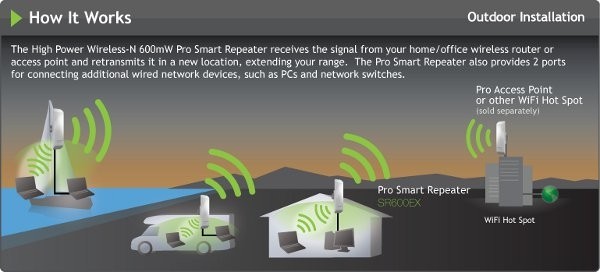Leeky
Posts: 3,357 +116
Amped Wireless has unveiled two new high power, long-range wireless products that are designed to increase your Wi-Fi range by up to 1.5 miles. These devices are primarily aimed at providing wireless solutions for large buildings, but work equally well in open spaces like parks, marinas and other outdoor areas, and even building-to-building environments.
The SR600EX Pro Smart Repeater expands the range of a wireless network by repeating the signal from a wireless access point or router. It also features two network ports for connecting additional computers, network switches, a desktop PC or other device requiring wired Internet access. The AP600EX Wireless-N pro access point on the other hand simply sits on the end of your existing wired network to enable an extreme Wi-Fi range and Wireless-N speeds.

As with all Amped Wireless professional series high power Wi-Fi solutions, the two new models being introduced feature waterproof enclosures and are suitable for indoor or outdoor mounting. They both use a 600mW amplifier combined with a high gain bi-directional antenna to achieve strong, wireless connections up to 1.5 miles away.
The devices even come complete with desktop stands, wall mountings or pole mounting kits, 30ft of Power over Ethernet (PoE) cable, and various adapters for installation locations lacking mains power. Both the models are priced at $179.99 and should be available from most retailers, as well as directly from the Amped Wireless online store.
https://www.techspot.com/news/45997-amped-wireless-increases-wi-fi-network-range-up-to-15-miles.html